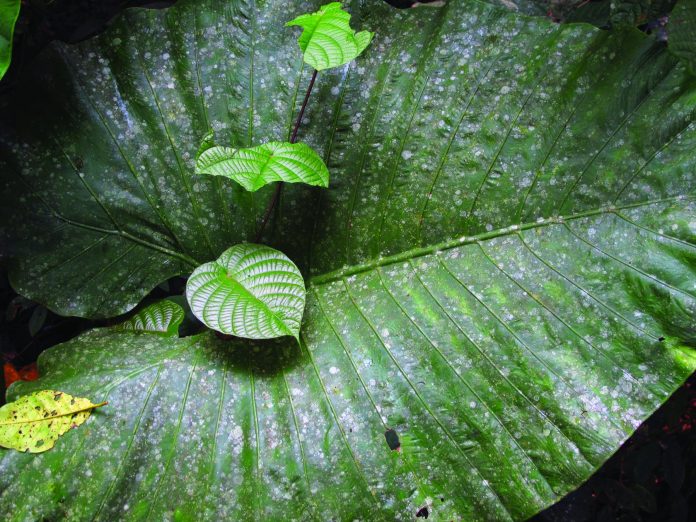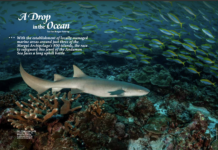
A look at some of the unexplored kingdoms of medicine – and why they’ve remained unmapped
Text and Photos YD Bar-Ness
We owe much of our good health to Earth’s biological diversity. Given the wealth of species in the world, scientists are still finding new natural sources for medicines. There are many promising medicinal sources within the planet’s biodiversity – animals, plants, fungus, bacteria, and more.
However, pharmacologists still have a wealth of further kingdoms to explore, such as minerals and inorganic chemicals, and electromagnetic and radioactive energies, presenting surprising new and innovative techniques in genetic medicine. Let’s take a look at some of these unexplored kingdoms of medicine, and gain a sense of why they’ve remained unmapped.
Traditional medicines have been passed down from one generation to the next between the ages, and we can only imagine the spark of inspiration that triggered their recognition by our observant ancestors. Modern pharmacy contains about 1,500 approved drugs, as listed by the US Food and Drug Administration; most of these are derived from or inspired by natural biochemistry – in particular, flowering plants.

Globally, 50,000 of the world’s 400,000 plants have been considered or investigated scientifically for medical potential, but there are also many thousands of traditional remedies that offer promising health solutions.
For example, the people of Southeast Asia’s rainforests have 6,500 plants in their cultural medicine chest. While random screening of plants may yield some results, scientists searching for new medicines can follow the wisdom of these cultures’ traditional medicines in targeting their search.

Another source is the animal world, with sources that include snake venoms, gland extracts, and refined tissues. There is an unexpectedly rich source of biodiversity that has, until now, been neglected and unexplored: underwater animals. With several million species estimated to live underwater, the liquid realm is mostly undiscovered due to its relative inaccessibility. Animals living in coral reefs, in particular, have a wide variety of chemical secrets that were impossible to sample before the invention of scuba diving.
There is also a wide variety of insects that have evolved into new species alongside flowering plants. As their biochemistry evolves to surmount plant defences, they have created new compounds that proffer a prospective realm for medicinal exploration. As is the case of underwater animals, the initial challenge is in simply documenting the existence of unknown species.


Some of the most important medicines come from fungi. The antibiotic penicillin was first isolated from a citrus mold, ushering in a new era of effective treatments
against bacterial infections.
Mycologists have used genetic techniques to hypothesise the existence of up to five million fungal species, but most of them remain undiscovered in the soil, on rainforest trees, within rotting wood, or even growing symbiotically within lichens.
The world’s greatest biodiversity lies almost completely unstudied in the catch-all category of microbes: a broad grouping which includes uncountable varieties of bacteria, viruses, algae, protozoa and more. Within a single litre of seawater, there may be almost 40,000 types of microbe; in oceanic volcanic vents and sulphuric caves, archaean microbes have a novel biochemistry that is poorly understood.
Related story: Leaving more than Footprints
Related story: Protecting the Proboscis
Related story: Growing a City
Accompanying these opportunities for medicine comes a sobering responsibility: to never overexploit rare resources – a warning we find in the rampant poaching of rhino and tiger for their perceived medicinal value. In doing so, we run the risk of damaging fragile ecosystems. However, we can place a great degree of human value on the wild forests and oceans that may yet yield new medicines to improve healthcare.
Not all medicines are found in Nature: We now have the ability to build medicines. Pharmacologists can combine chemicals directly, often using a natural source as inspiration. Almost all of these are organic, built upon carbon molecules as in living systems. There are some inorganic – and even elemental – medicines that are medically active. Furthermore, there are potentially revolutionary techniques being developed to build tailored genetic medicines in which engineered organisms, or snippets of DNA, are medically utilised.
With the help of modern medical care, we are living longer, healthier lives than our predecessors. While there may be new health concerns on the horizon, there are also vast kingdoms awaiting medical exploration. We have also broadened our perspectives to count entirely different concepts as medicine: exercise, silence, meditation, music, travel, sleep, friendships. Who knows where the next life-giving discovery will be made?
For more stories and photographs from this issue, download a digital copy of Asian Geographic No. 127 Issue 5/2017 here! And subscribe here!










